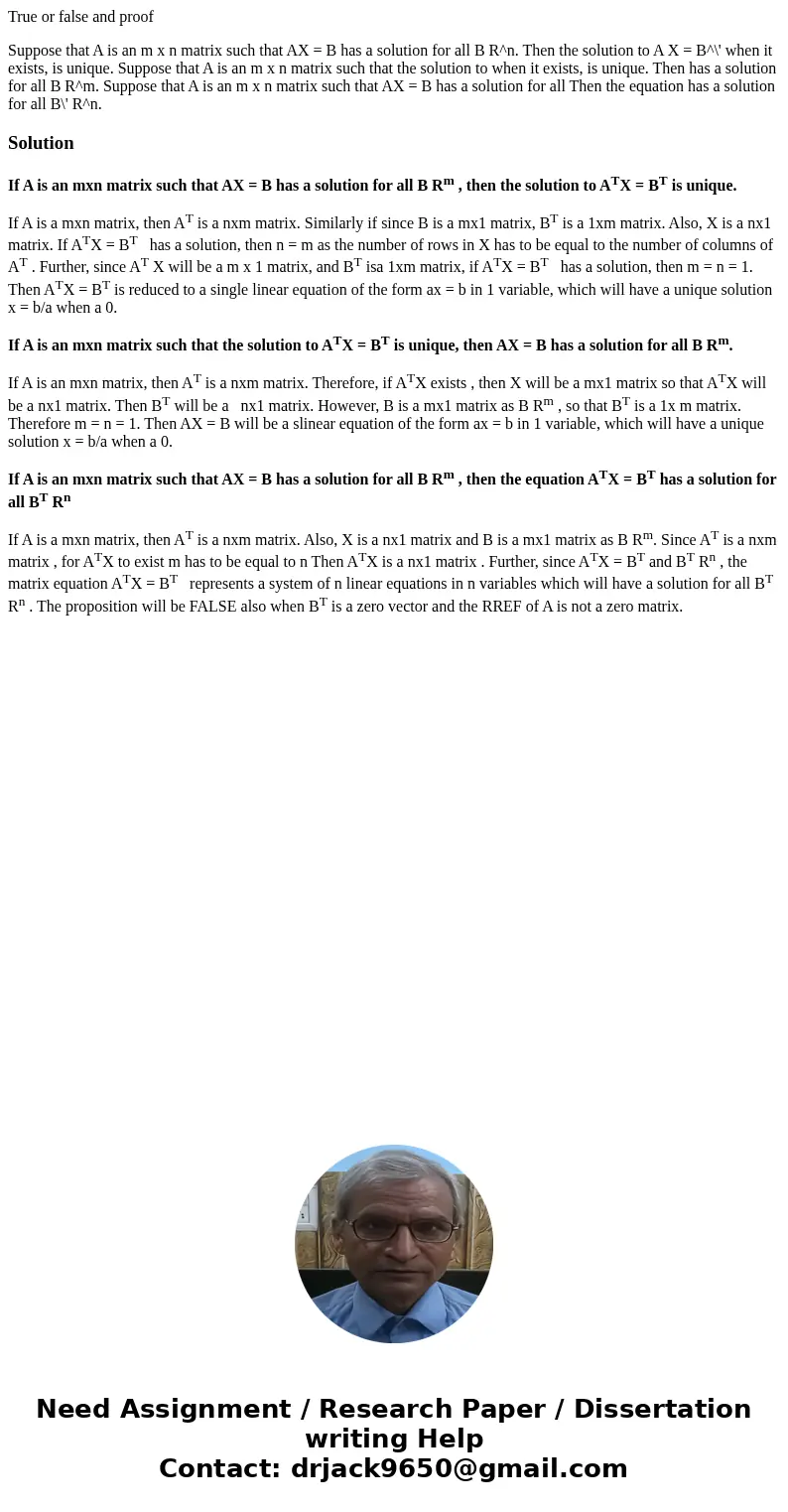True or false and proof Suppose that A is an m x n matrix su
True or false and proof
Suppose that A is an m x n matrix such that AX = B has a solution for all B R^n. Then the solution to A X = B^\' when it exists, is unique. Suppose that A is an m x n matrix such that the solution to when it exists, is unique. Then has a solution for all B R^m. Suppose that A is an m x n matrix such that AX = B has a solution for all Then the equation has a solution for all B\' R^n.Solution
If A is an mxn matrix such that AX = B has a solution for all B Rm , then the solution to ATX = BT is unique.
If A is a mxn matrix, then AT is a nxm matrix. Similarly if since B is a mx1 matrix, BT is a 1xm matrix. Also, X is a nx1 matrix. If ATX = BT has a solution, then n = m as the number of rows in X has to be equal to the number of columns of AT . Further, since AT X will be a m x 1 matrix, and BT isa 1xm matrix, if ATX = BT has a solution, then m = n = 1. Then ATX = BT is reduced to a single linear equation of the form ax = b in 1 variable, which will have a unique solution x = b/a when a 0.
If A is an mxn matrix such that the solution to ATX = BT is unique, then AX = B has a solution for all B Rm.
If A is an mxn matrix, then AT is a nxm matrix. Therefore, if ATX exists , then X will be a mx1 matrix so that ATX will be a nx1 matrix. Then BT will be a nx1 matrix. However, B is a mx1 matrix as B Rm , so that BT is a 1x m matrix. Therefore m = n = 1. Then AX = B will be a slinear equation of the form ax = b in 1 variable, which will have a unique solution x = b/a when a 0.
If A is an mxn matrix such that AX = B has a solution for all B Rm , then the equation ATX = BT has a solution for all BT Rn
If A is a mxn matrix, then AT is a nxm matrix. Also, X is a nx1 matrix and B is a mx1 matrix as B Rm. Since AT is a nxm matrix , for ATX to exist m has to be equal to n Then ATX is a nx1 matrix . Further, since ATX = BT and BT Rn , the matrix equation ATX = BT represents a system of n linear equations in n variables which will have a solution for all BT Rn . The proposition will be FALSE also when BT is a zero vector and the RREF of A is not a zero matrix.

 Homework Sourse
Homework Sourse